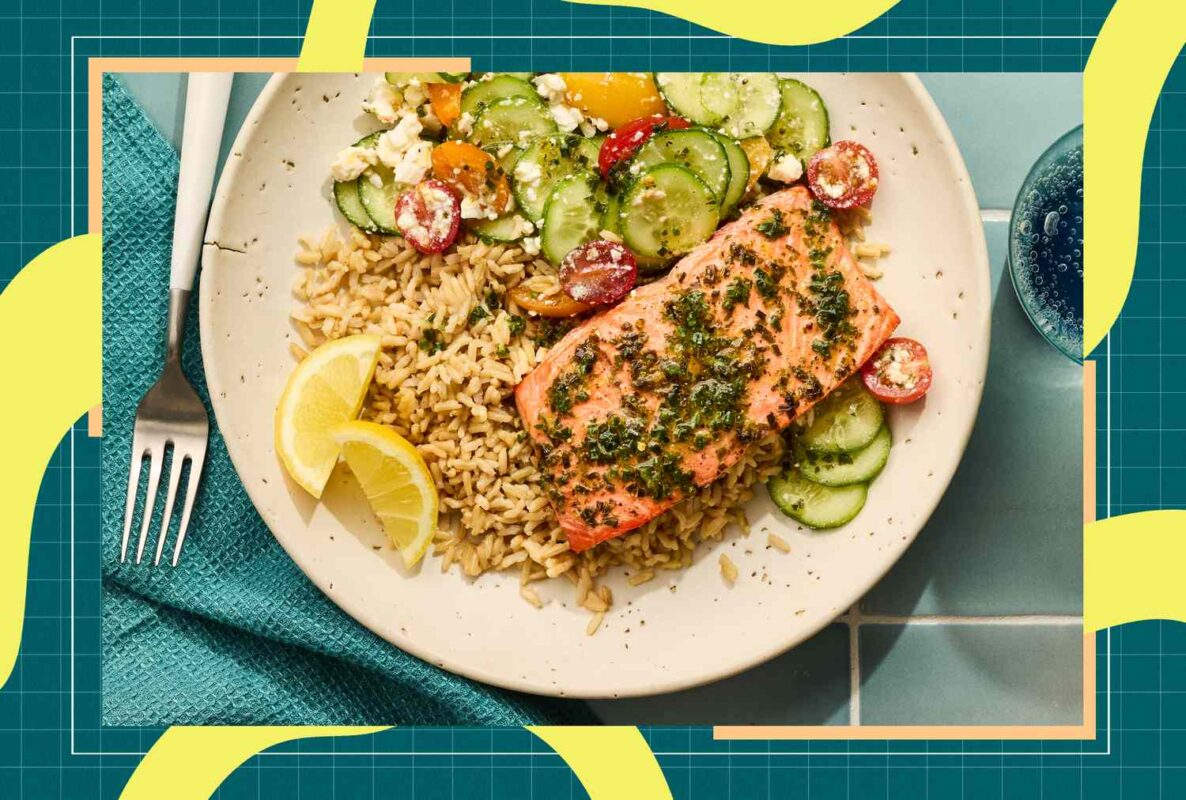Blog
9 Pantry Foods You Should Be Eating for Weight Loss

- If weight loss is your goal, one practical place to begin is by taking inventory of your pantry.
- Dietitians recommend stocking up on healthy pantry staples like pistachios, beans, canned tuna and nutritional yeast.
- Prioritizing staples rich in fiber, protein and healthy fats can help you feel fuller and support weight loss goals.
A healthy weight is individualized based on a person’s height, body composition, physical activity and health conditions. Usually, people fall within a range. It is possible to be in good health while carrying a few extra pounds; however, excess weight—especially in the abdomen—can have negative implications. Losing weight is complex, and people have different motivations and methods for success. One practical place to begin is by taking inventory of your pantry. The foods you keep on hand can shape habits that support your goals. Prioritizing pantry staples rich in fiber, healthy fats, and protein can help promote fullness and support sustainable weight management. Read on to see what nine pantry items you should be eating if weight loss is your goal.
1. Pistachios
Small but mighty, pistachios are a versatile and nutrient-dense pantry staple that can aid in achieving a healthy weight. About 50 kernels (1 ounce nuts without shells) contains 162 calories, 3 grams fiber, 6 grams protein and 13 grams fat (90% which is unsaturated). “Their high content of fiber, protein and healthy fats contributes to prolonged satiety,” says Caroline Thomason, RDN. Satiety is the feeling of being full and satisfied and able to stop eating. Use pistachios for an added crunch and burst of flavor on salads, grain bowls, yogurt or roasted vegetables—or enjoy them on their own.
2. Nutritional Yeast
Rich in B vitamins and low in calories, nutritional yeast can be added to plant-based meals to boost their nutrition. Its cheesy flavor lends itself as a dairy cheese replacement, reducing calories, sodium and saturated fat. A 2-tablespoon serving provides 40 calories, 3 grams carbohydrate, 2 grams fiber and 5 grams protein. It is also low in sodium (only 20 milligrams in that same serving). Add nutritional yeast to steamed vegetables, whole-grain side dishes or air-popped popcorn for a satisfying flavor.
3. Tuna
Canned tuna is low in calories and packed with lean protein. While amounts vary based on brands, canned tuna is a natural source of omega-3 fatty acids. One 3-ounce can of tuna provides about 21 grams of protein and 1 gram of fat. Thomason says, “Tuna’s omega-3s may support fat metabolism and reduce inflammation, both important for a long-term healthy weight.” She suggests skipping the mayo and making a Mediterranean-inspired tuna salad using olive oil, feta cheese and herbs.
4. Whole-Wheat Pasta
On busy nights when you need to throw together a filling meal, whole-wheat pasta can be a great ingredient to have on hand. Thomason says, “Whole-wheat pasta contains more fiber and protein than regular pasta, which slows digestion and helps stabilize blood sugar, two things that can reduce cravings later.” Research shows that higher-fiber diets are consistently linked to lower body weight and better appetite regulation, she adds. If you’re not used to eating whole-wheat pasta, don’t worry—swapping it is an easy transition. To get acclimated to the chewier texture, Thomason recommends trying a cold pasta salad with roasted vegetables. You can also enjoy whole-wheat pasta with marinara sauce or kale pesto or mixed into your favorite soups.
5. Tea
Consuming sugar-sweetened beverages like soda regularly is associated with negative health outcomes such as weight gain and type 2 diabetes. Simply swapping your sugary beverages for unsweetened, zero-calorie choices like tea is a great way to stay hydrated while supporting your weight-loss goals. Tea flavors are plentiful, and some varieties may provide added healthy compounds like antioxidants. Brew a batch of your favorite flavor and keep it in the refrigerator for a refreshing drink.
6. Canned Artichokes
Drain, rinse and chop canned artichoke hearts for a fiber-filled, nutrient-dense addition to salads, egg or tofu scrambles, dips, wraps and sandwiches. Canned artichoke hearts provide 5 grams per ½ cup. Some of the fiber in artichokes is inulin, a prebiotic fiber; this type of fiber feeds good bacteria. Having enough good bacteria in your gut may assist in metabolism, weight management and reducing inflammation.
7. Chia Seeds
Chia seeds are an impressive source of dietary fiber, plant-based protein, antioxidants, omega‐3 fatty acids, vitamins and minerals. “Chia seeds are a powerhouse of fiber, with about 10 grams in just 2 tablespoons. That is 35% of your daily needs in one small scoop. Plus, when combined with liquid, they expand in your stomach and help you feel fuller for longer. Chia’s mix of fiber, protein and healthy fats makes it ideal for weight-friendly meals and snacks,” says Thomason. Enjoy chia seeds in chia pudding, mixed into yogurt and tossed into egg scrambles, veggie side dishes or grain bowls. Once opened, it’s best to store them in the refrigerator to maximize their shelf life.
8. Beans
Lauren Harris-Pincus, M.S., RDN, recommends canned beans, such as black, kidney, white, garbanzo and pinto, as an easy and affordable way to increase your intake of plant-based protein, fiber and potassium. She says, “One study showed that adults who consume 1.7 to 2 servings of beans and/or chickpeas per day had significantly lower body mass index (BMI), decreased body weight and smaller waist sizes compared to the non-bean and/or chickpea consumers.”
Pincus shares a pro tip for using beans: “For a fabulous fiber- and protein-rich snack that packs a nutritional double whammy, roasting ½ cup drained and rinsed canned chickpeas provides 5 grams of fiber, or 20% of the Daily Value, making it an excellent source. It also brings 6 grams of plant-based protein for a filling, blood sugar–stabilizing nosh. Add any type of bean to salads or soups; try subbing lentils into tacos, Bolognese or Sloppy Joes,” she says.
9. Popcorn
Snacking is a great opportunity for increasing your energy and nutrient intake; however, many shelf-stable pantry snack foods are high in fat, sodium and sugar and low in fiber, vitamins and minerals. But popcorn is a great addition to your snack repertoire, as it’s low in calories and contains fiber and protein. Pop it yourself and flavor it at home for a delicious and satisfying snack. For example, this lime-Parmesan popcorn contains 4 grams of protein and 3 grams of fiber for only 113 calories in a 2-cup serving.
Our Expert Take
Stocking your pantry with nourishing, versatile staples is a simple yet powerful step toward sustainable weight loss. While this list isn’t exhaustive, it highlights several foundational foods—like beans, nuts, fish, and whole grains—that support fullness and overall health. Focusing on foods rich in fiber, protein, and healthy fats can help satisfy your hunger and support your long-term goals. Small, consistent choices add up over time.












